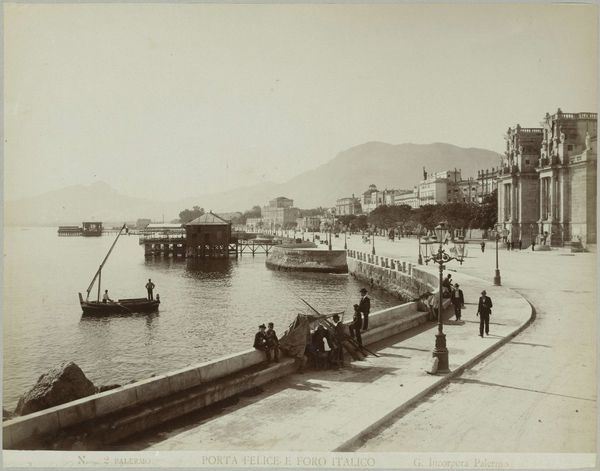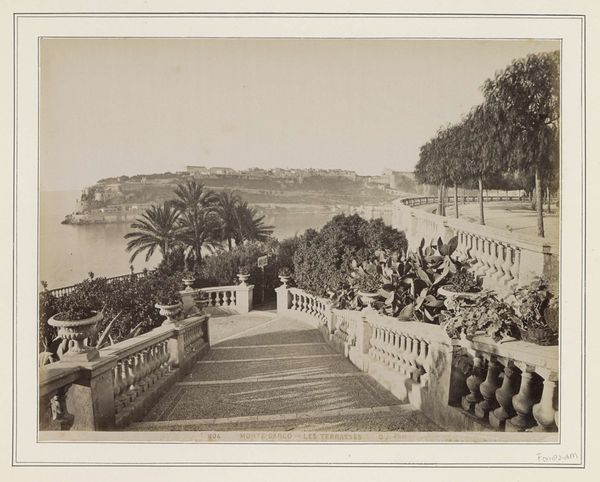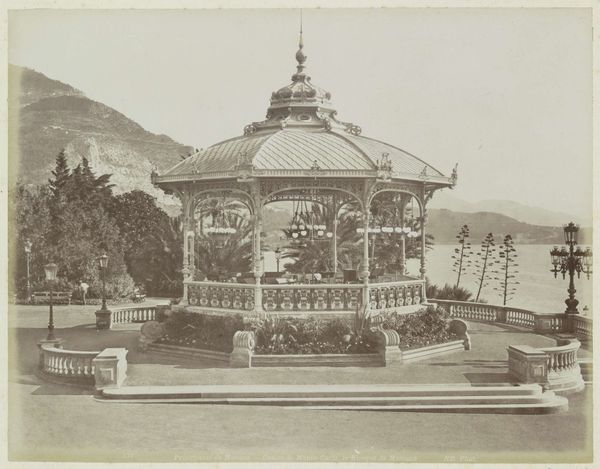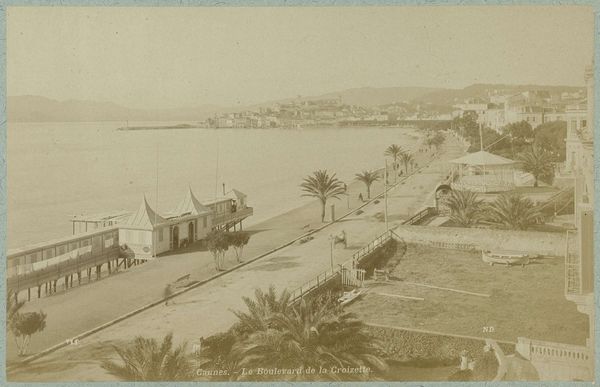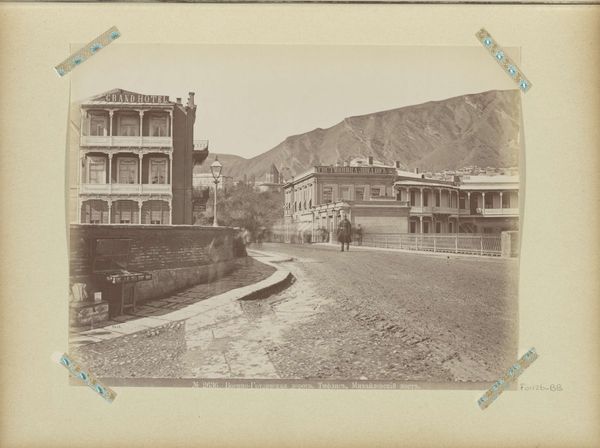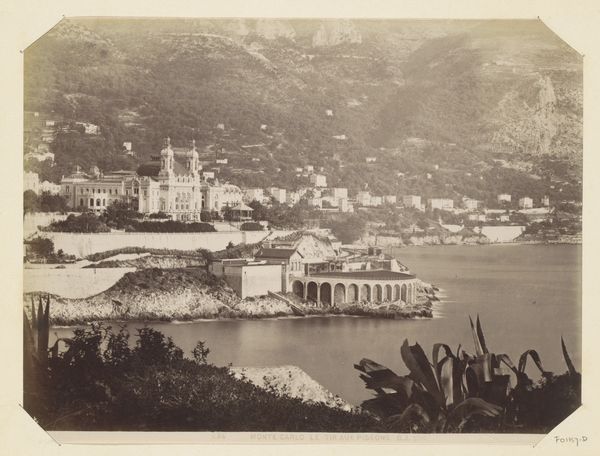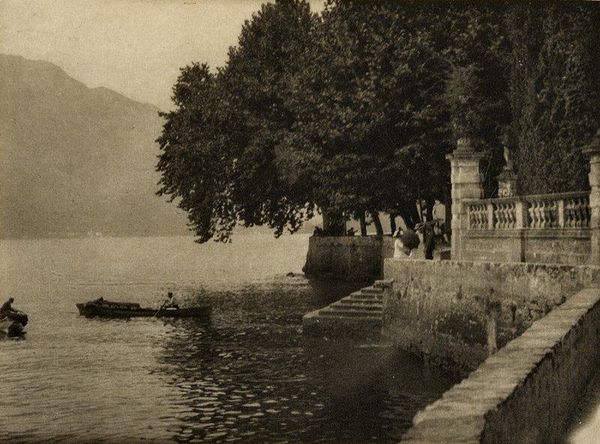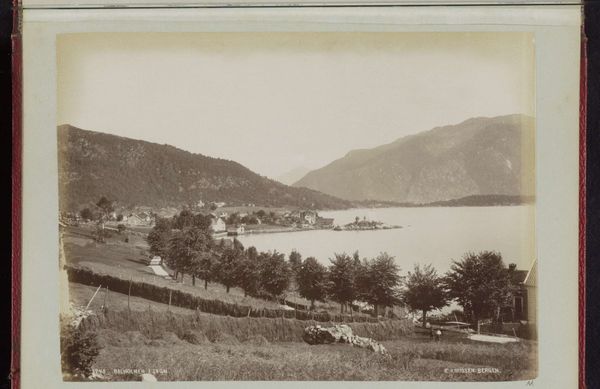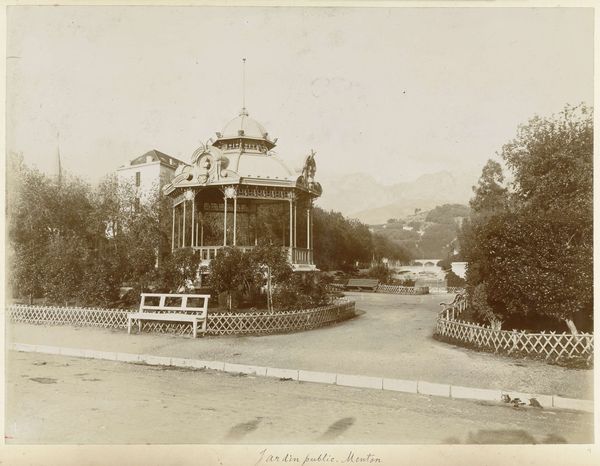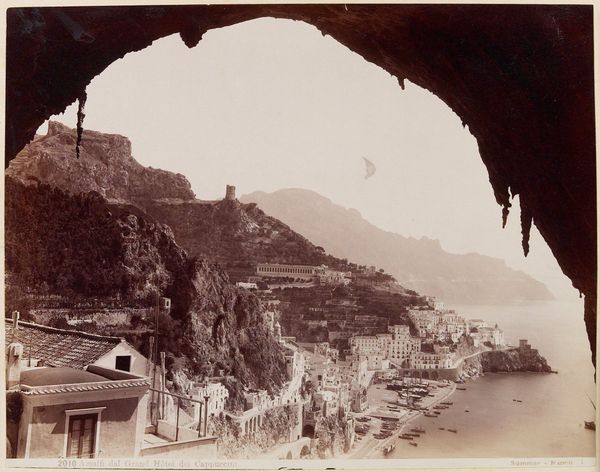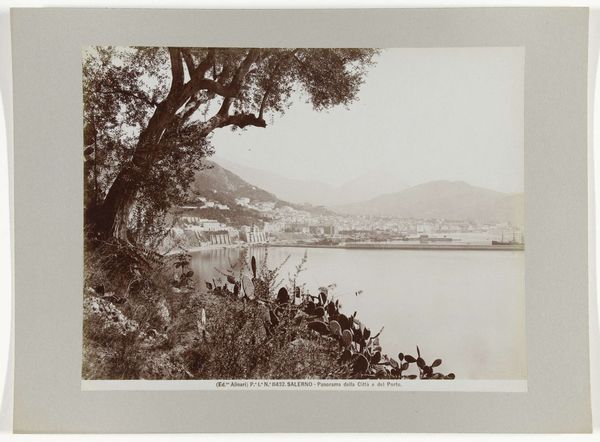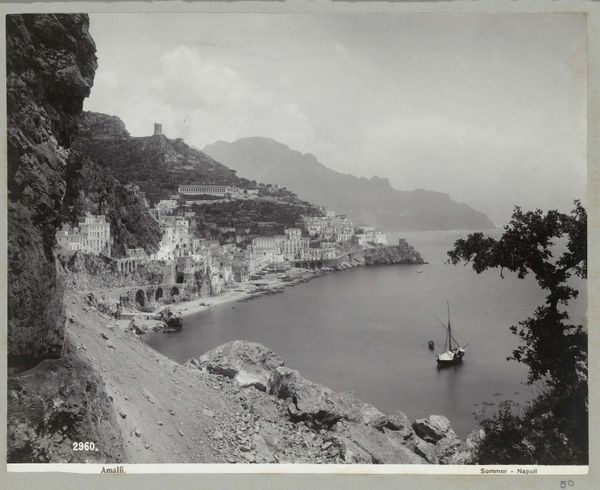
Gezicht op de terrassen en de muziekkiosk bij het Monte Carlo Casino c. 1870 - 1900
0:00
0:00
photography
#
16_19th-century
#
landscape
#
outdoor photograph
#
photography
#
cityscape
#
realism
Dimensions: height 209 mm, width 274 mm
Copyright: Rijks Museum: Open Domain
Curator: This is an outdoor photograph titled “Gezicht op de terrassen en de muziekkiosk bij het Monte Carlo Casino” which roughly translates to "View of the terraces and the music kiosk at the Monte Carlo Casino.” It’s attributed to Étienne Neurdein, and was likely created between 1870 and 1900. Editor: It projects such a formal, serene mood. The tones are muted and calming. It’s a beautifully composed shot; the tiered perspective really draws your eye into the landscape. Curator: Indeed. Structurally, Neurdein’s photographic composition showcases a keen understanding of perspective, using layered horizontal planes and strong leading lines from the terraced architecture. Editor: Speaking of that architecture, it is really interesting to observe how places like the Monte Carlo Casino operated then as spaces catering predominantly to elite society. The location and the framing of this photograph emphasize a space meticulously designed for leisure, excluding those outside of a specific class. Curator: Agreed. Semiotically, the inclusion of manicured gardens, elaborate balustrades, and a decorative bandstand all serve as signs denoting affluence and high culture. Editor: Considering the photographer, it’s interesting to note how photography, even in its infancy, was instrumental in promoting these aspirational destinations to an international audience. Curator: And the almost complete absence of people contributes to the overwhelming impression of manufactured perfection. The photograph seems to valorize not only the location but also a very specific social structure. Editor: Ultimately, examining photographs like this enables us to understand the visual languages through which places reinforce cultural ideals and also social hierarchies. Curator: This examination invites us to engage deeply with its formal devices and theoretical underpinnings, offering pathways to understand art beyond immediate perceptions. Editor: Yes, art is rarely neutral and the deeper you look into it the more likely you will be to come out with important ideas about how to challenge that, or how to make better work informed by this.
Comments
No comments
Be the first to comment and join the conversation on the ultimate creative platform.

